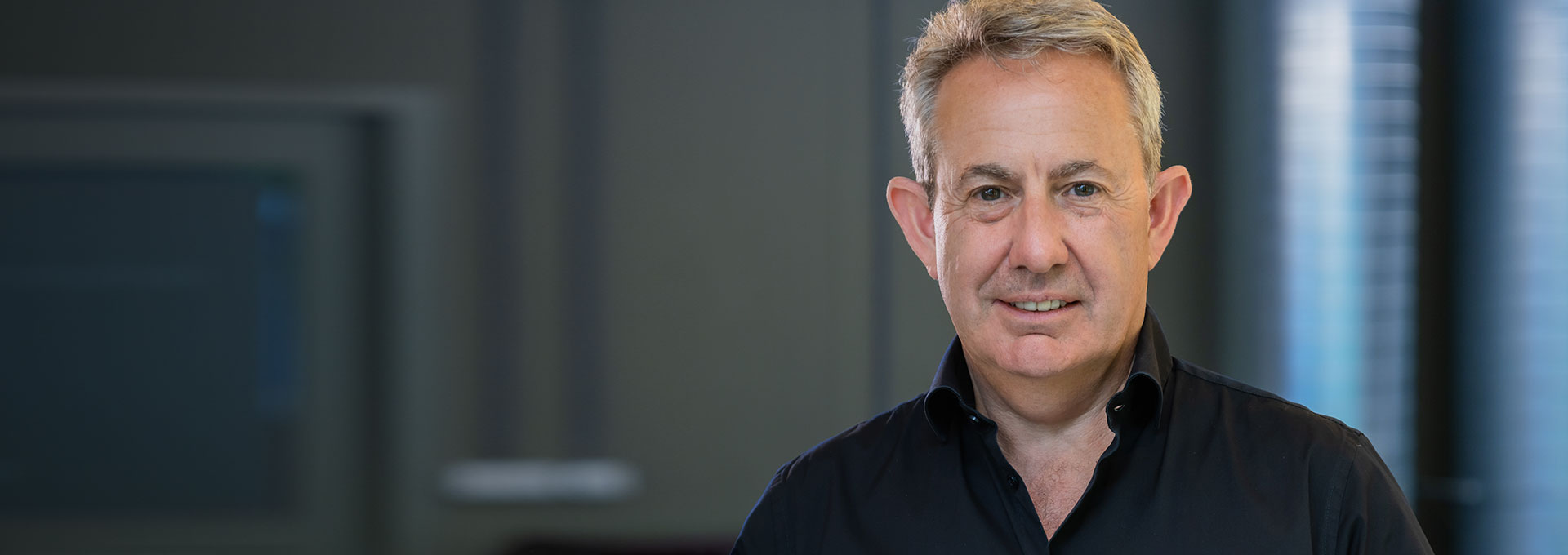
About motivation & attitude

As Chief Experience Design Officer, Sean Carney has overall responsibility for all the capabilities around design. Burkhard Jacob, Managing Director Red Dot Institute, met him for an interview in Eindhoven. In the second of four parts of the interview, Sean Carney explains the difference between medical technology and healthcare technology.
Burkhard Jacob: Competitors talk about medical technology and medical design. Why is it that Philips talks about healthcare technology?
Sean Carney: That was one of the things we did very early on with our CEO, Frans van Houten, ten to 12 years ago; we set the vision to become a health technology company and created the notion of a “health continuum”. At the time, when we spoke to the capital markets, the analysts were framing our intention as a move to MedTech. We countered and coined the phrase HealthTech, as we really believed the opportunity was to take a more holistic view of healthcare and think more broadly about prevention, or healthy living, as well as diagnosis and treatment. If you look back, before Philips announced this intention, nobody was talking about health technology. It was always medical technology. We wanted to broaden our vision and our potential impact on the world and very deliberately said we wanted to steer ourselves based on an end-to-end health continuum, thinking holistically. How do we keep people out of the hospital, out of the healthcare system and help them lead a healthier life? And if they do happen to come through the hospital doors, how do we take care of them, treating them as quickly, efficiently and effectively as possible, so that they can get back to living a normal, healthy life?
In 2013, Philips changed its slogan or brand line from “Sense and Simplicity” to “Innovation and You”. Why does this fit better for Philips?
That was a lot of work. Because that was also when we redefined the whole brand identity. Look, if we break it down, we are an innovation company at heart. We have got 130 years of innovation behind us. We have incredible functions like Philips Research, doing cutting-edge technology discovery. But there is another side to what we do. And that’s the human-centred approach that has been a core attribute of the company’s approach from the start. So, it’s technology with meaning, technology with purpose, technology that’s human-scaled and for the good of humanity. It’s innovation, but it’s for you. And we make it personal. That was where the whole design language came from. The whole identity system was built off the back of that.
It seems that the slogan “Innovation and you” is also one of the strongest motivation factors for the designers working for Philips?
Absolutely, it’s in the DNA. We are innovators. We are technologists, but it was not just for the sake of inventing new technology. It was to have that human perspective, that human impact. And that is motivating, whether you are a physicist or biochemist, or whoever you are. We’ve evolved and embedded this into our innovation processes, which always evaluate the impact of a new idea through the lens of the quadruple aim: better outcomes for patients, delivered at lower costs with better access, improving the patient experience, by empowering the staff and ensuring they have the best experience.
Do you think the slogan “Innovation and you” also fits with your kind of design philosophy of co-creation?
Yes, because we involve ‘you’ in the creation. Now this doesn’t work in every sector. But in our world, we believe in pulling people together so that they are truly involved in the creative process. We enable them to engage in finding solutions to complex problems, and in the end ensure that they feel pride and ownership for the solutions.
Not only is Philips exemplary when it comes to putting into practice its own claim for a multidisciplinary approach to design, it is also one of the few companies worldwide to offer solutions to the pressing issues of the 21st century. Against the backdrop of an ageing population, the increase in chronic illnesses, the threat of pandemics and rising healthcare costs, Philips’ strategic realignment and repositioning as a leading health tech company is also likely to provide impetus to other companies.
The Philips Experience Design Team led by Sean Carney puts these ideals and ideas into practice using innovative technologies. The team always starts from the perspective of the product’s subsequent use in practice. This approach results in devices that are intuitive and simple to use and operate but that are also effective and deliver meaningful outcomes.
For this accomplishment, the design team is receiving the honorary title “Red Dot: Design Team of the Year 2022”. Sean Carney and his team are worthy successors to last year’s recipient, Studio F. A. Porsche